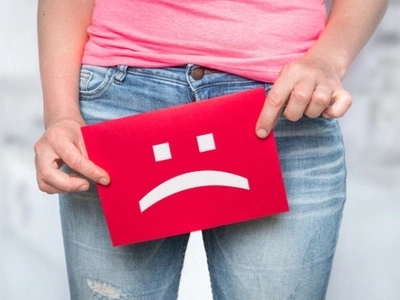Urinary Incontinence Is Not Unsolvable
 09.08.2022
09.08.2022The condition of uncontrollable and involuntary urinating is called urinary incontinence. This condition is an important health problem that adversely affects the quality of life and the social life of the individual. Many women have to accept this situation as normal and live by hiding the urinary incontinence problem.
Since the causes of urinary incontinence are very different, the range of treatment also varies widely. Weakness of the floor muscles of the genital organs, hormonal deficiency, urinary tract infections and neurological diseases can be listed as the main causes. Giving birth and going through menopause are natural conditions that increase the risk of urinary incontinence. Weakness of the muscular structure, long-term constipation and lifting heavy things are among the reasons that increase the risk factor for urinary incontinence.
There are different types of urinary incontinence depending on how, and when, and in what way it happens. These are evaluated in 3 types: stress-type incontinence, urge incontinence and mixed type incontinence.
- Stress-type urinary incontinence; It is urinary incontinence experienced in situations such as coughing, laughing, bouncing-jumping, heavy lifting. In these cases, urinary incontinence occurs if the muscles that help continence cannot resist the high pressure on the bladder.
- Urge incontinence; is the involuntary incontinence of urine after a sudden feeling of urge.
- Urinary incontinence, in which both conditions are experienced together, is mixed type incontinence.
After getting the correct history of patients with urinary incontinence (how and when urinary incontinence occurs), physical examinations and inspections are conducted and it is determined which type of urinary incontinence they have. In the history, the answers to questions such as when urinary incontinence occurs too much, how much fluid is consumed, whether they have any disease or use any medicine, how often they have a need for urinating, whether they urinate at night, they can empty the urine completely, are sought. In the examination, it is evaluated whether there is urinary incontinence after straining or coughing with full bladder. Tests can be performed for urinary tract infection or to understand how the urinary bladder contracts.
After determining which type of urinary incontinence the person has, appropriate treatment options are sought considering the degree of urinary incontinence and its effect on quality of life. Treatment options include lifestyle adjustment, bladder and pelvic floor muscle exercises, medication, and surgery. Among lifestyle adjustments, it is very important to avoid constipation and excessive weight gain. Pelvic floor muscles may weaken in cases of some diseases and hormonal changes that develop with age, pregnancy-birth, being overweight, lifting heavy things, etc. Pelvic floor muscles can be strengthened with exercises performed regularly every day, like continence, squeezing and relaxing the genital area. Especially in the case of urge incontinence, medication will be useful. Or the local use of estrogen may be useful in urinary incontinence due to hormone deficiency after menopause.
In stress-type urinary incontinence, surgical treatment can be performed by choosing from the options the most appropriate for the patient according to age, severity of urinary incontinence and gynecological examination findings.
If a good evaluation and appropriate treatment selection is not made, the patient cannot recover from urinary incontinence or it may recur. For this reason, it is very important that each patient is evaluated by a specialist and to understand which type of urinary incontinence is experienced and the appropriate treatment option is presented to the patient.
Urinary incontinence, which affects the quality of life and social life immensely, should not be the fate of any woman and this problem should be solved with appropriate treatment.